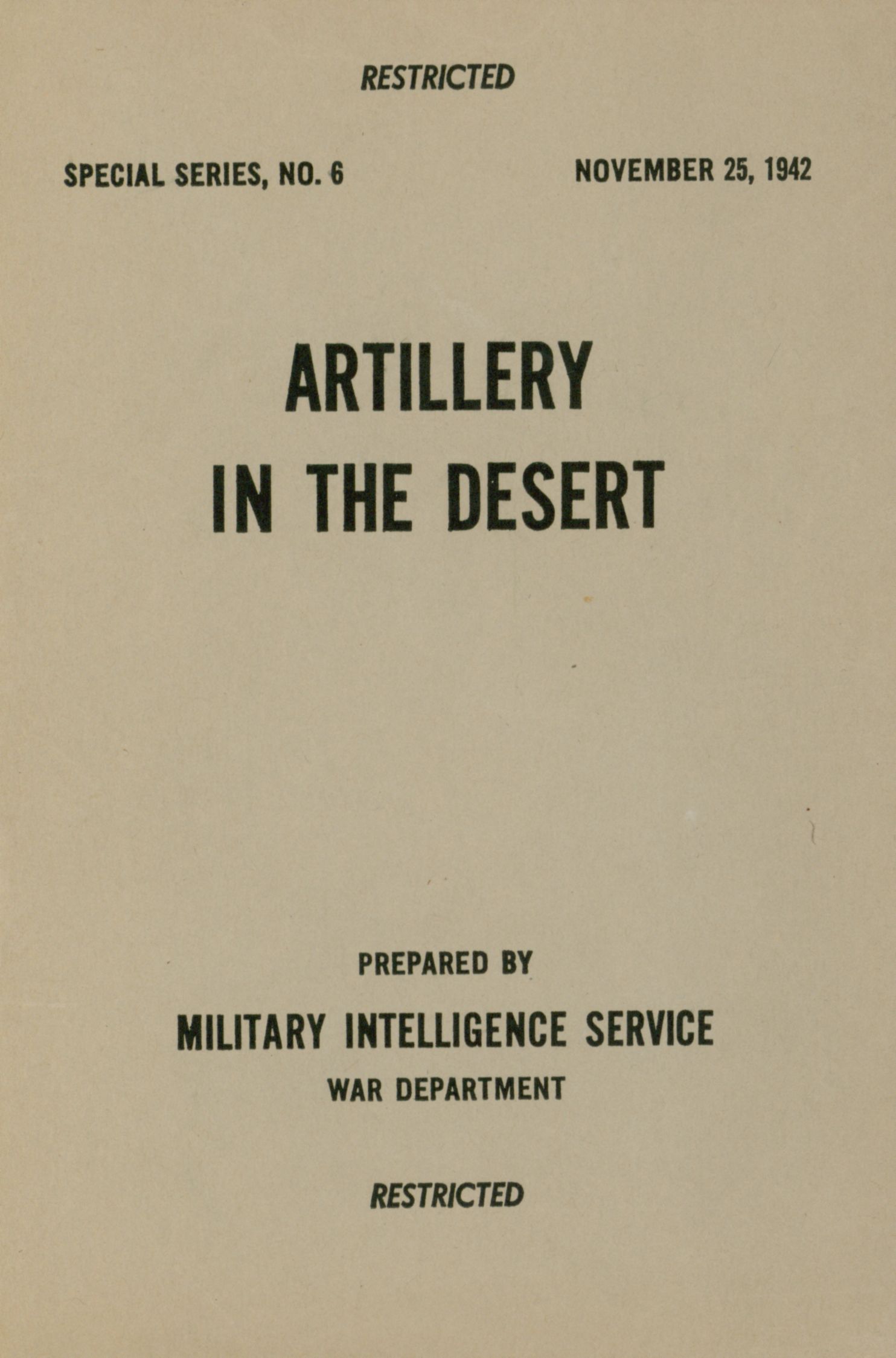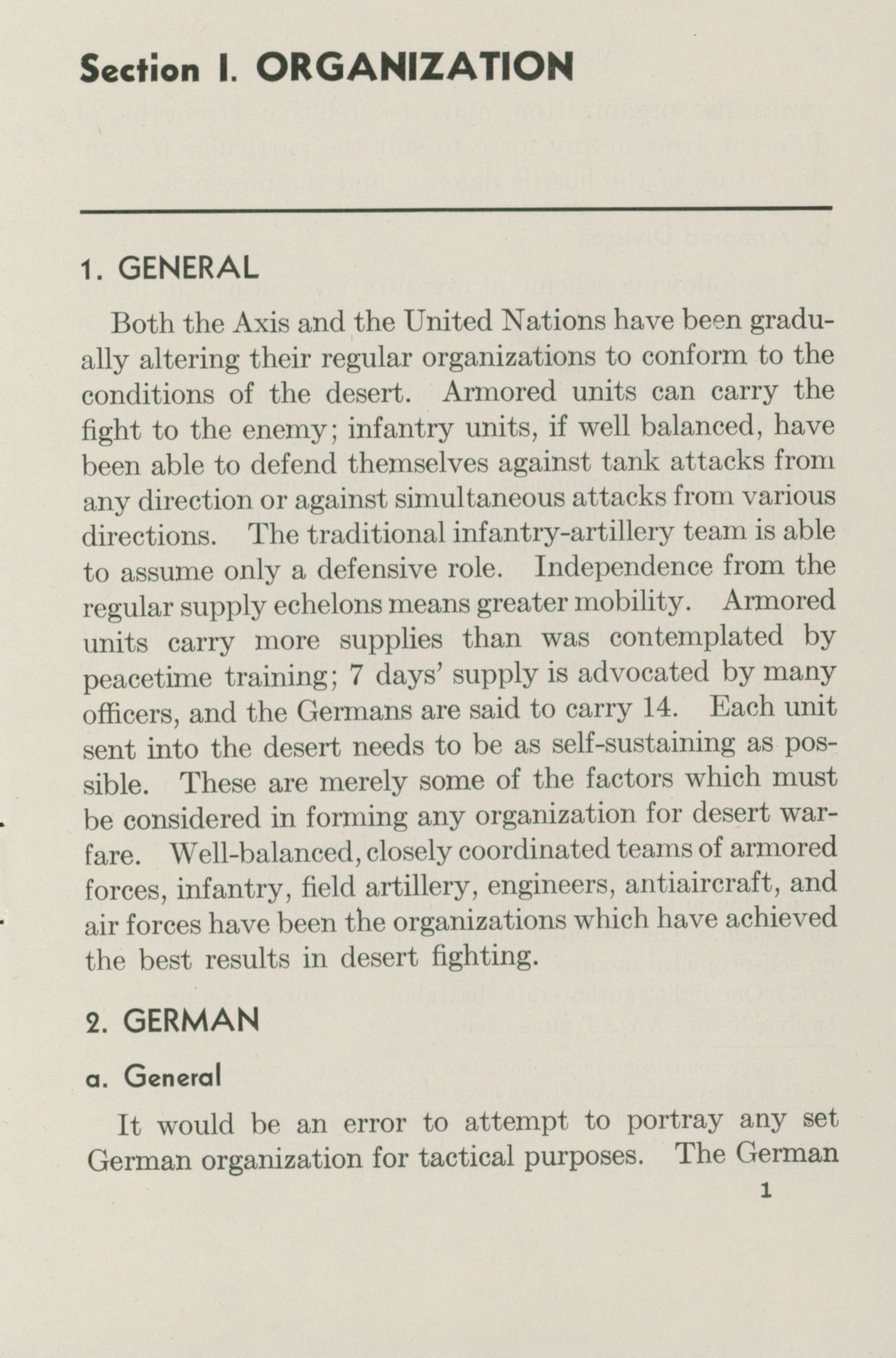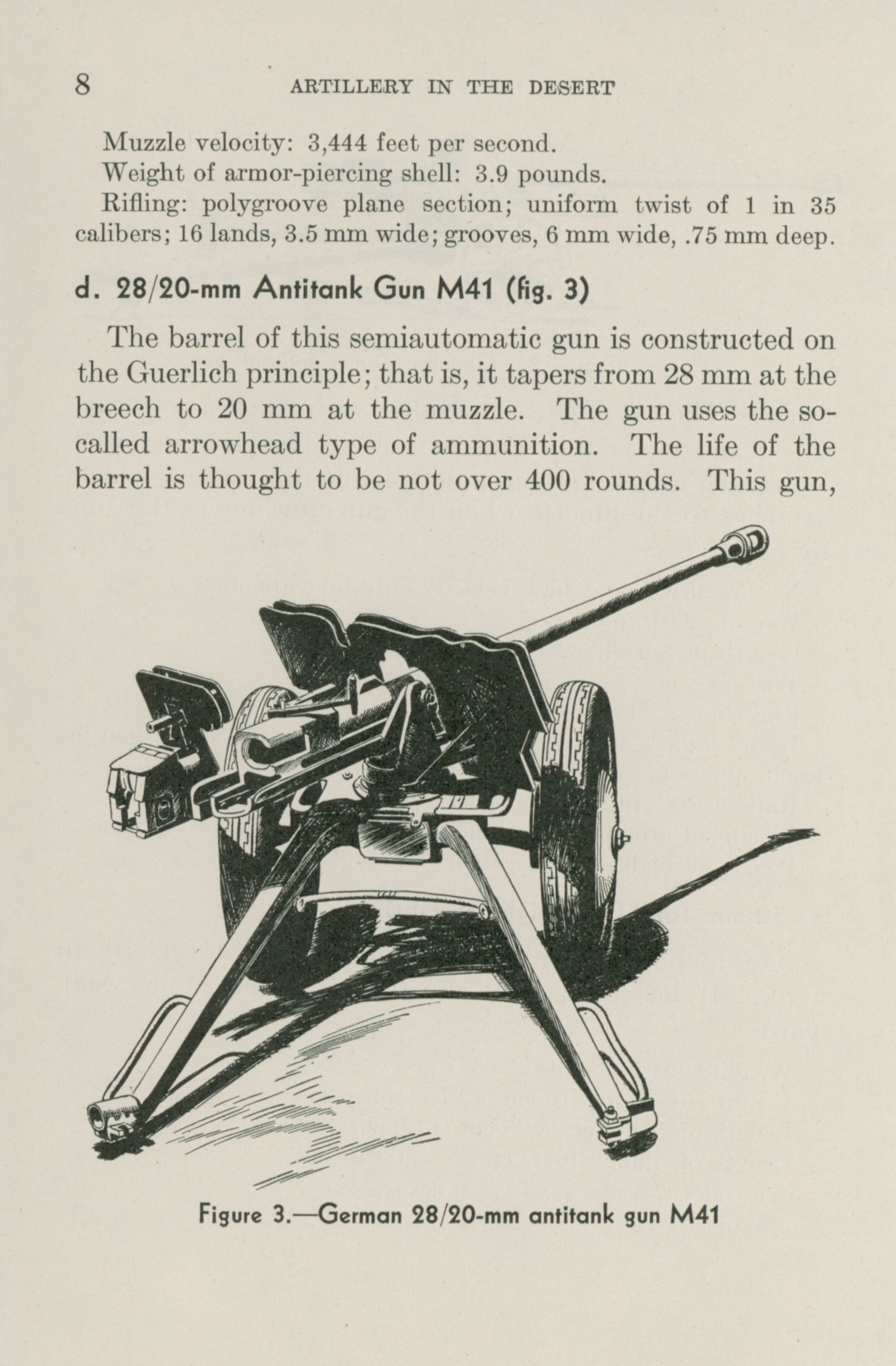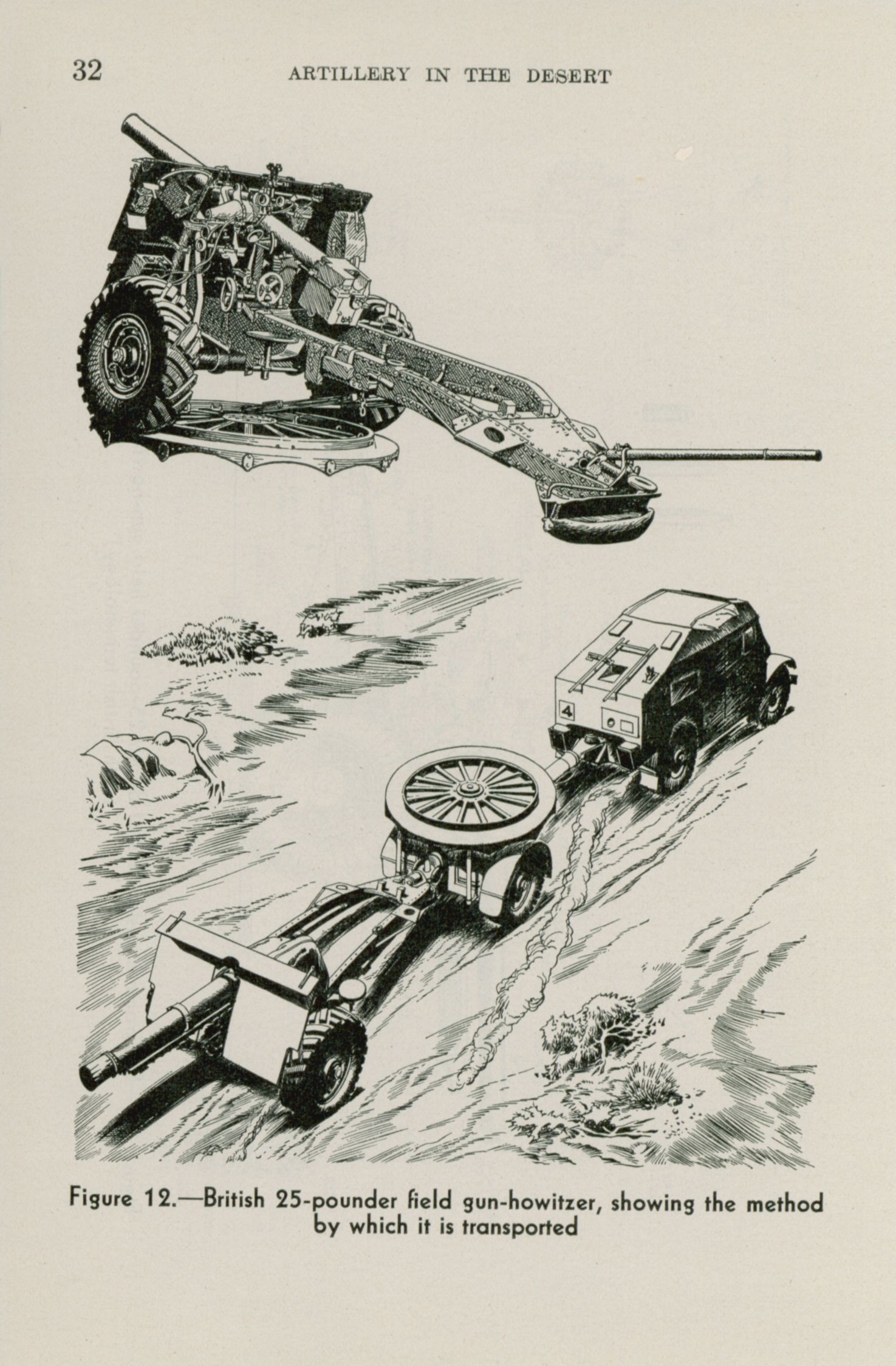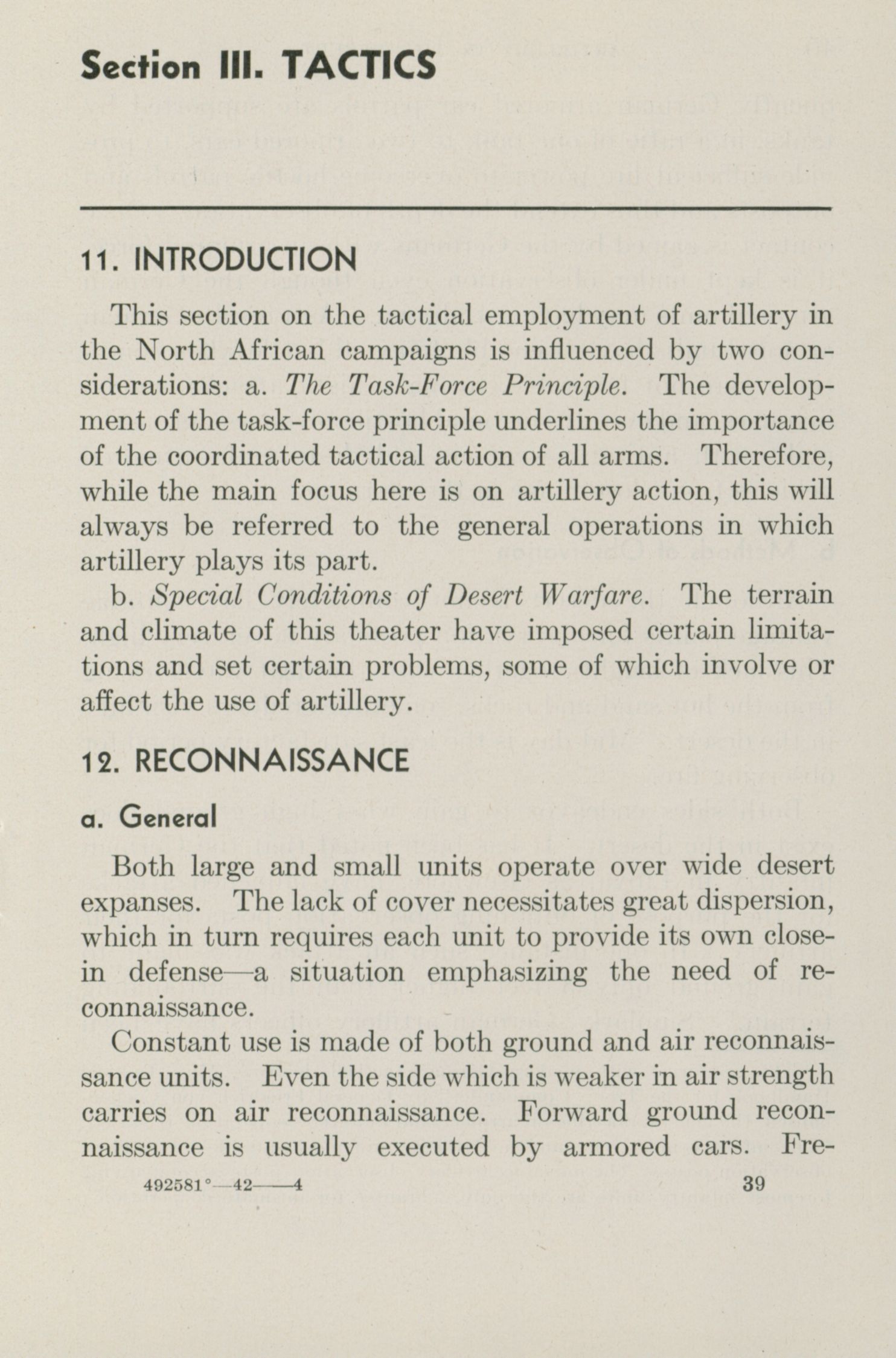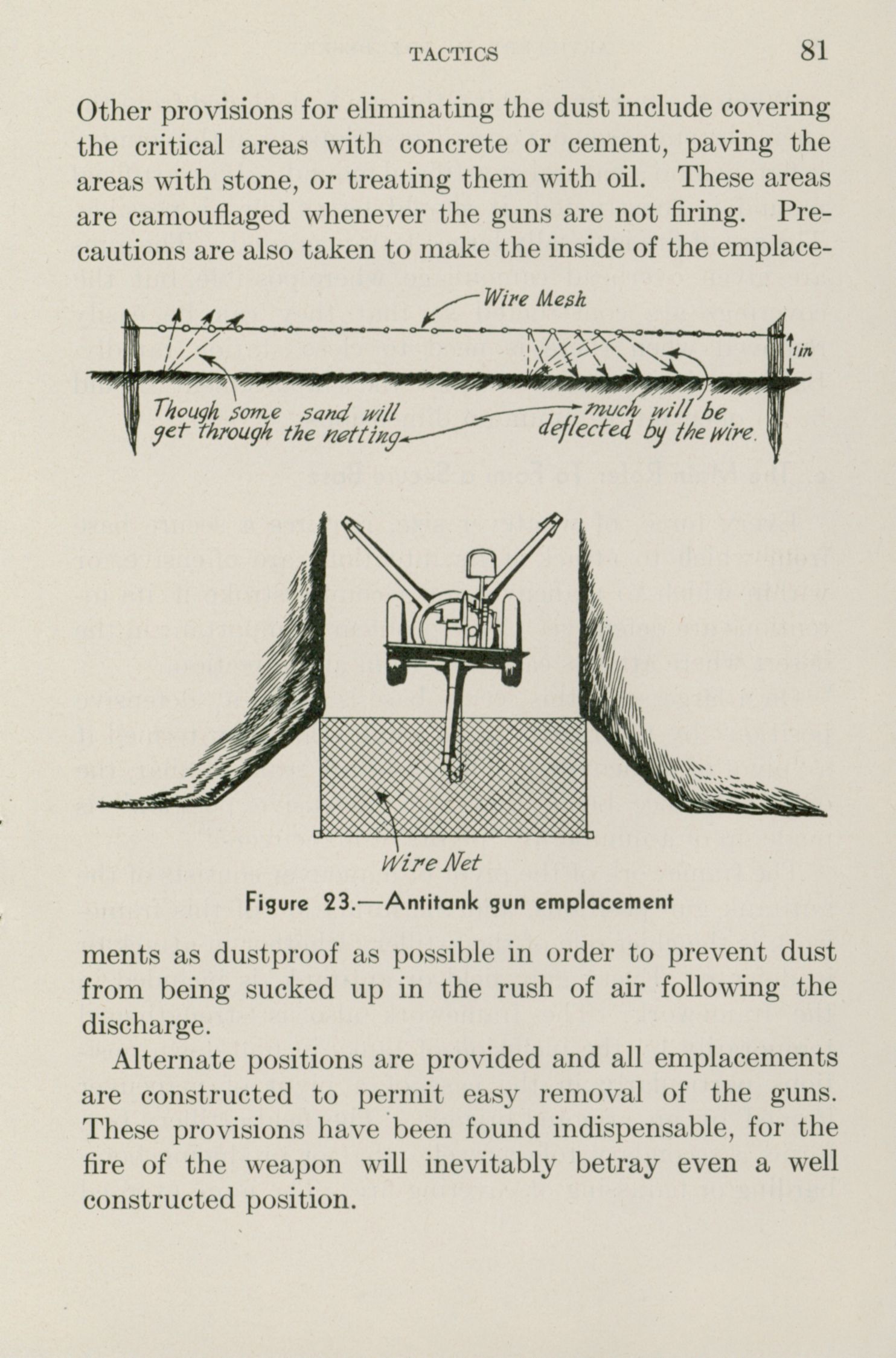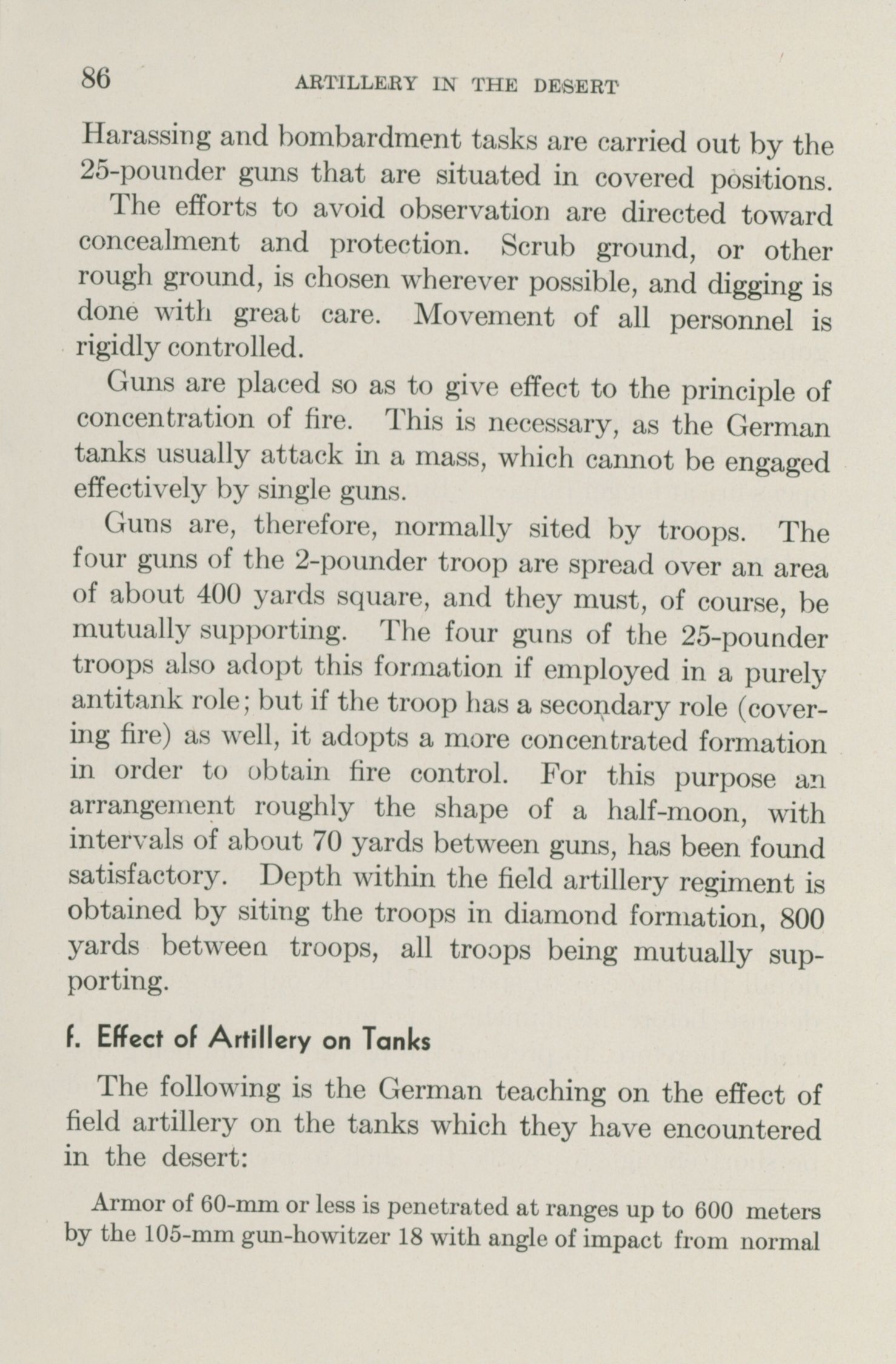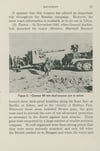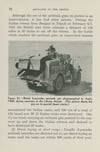Artillery in the Desert (Special Series No. 6)
Artillery in the Desert
Special Series No. 6
Prepared by Military Intelligence Service, War Department, Washington, D.C., November 25, 1942
Publication of the Special Series is for the purpose of providing officers with reasonably confirmed information from official and other reliable sources.
FOREWORD
In the Libyan desert, where fighting has been continuous since 1940, fire power has been a decisive factor, and artillery has played an important role in its development. Guns have halted tanks and infantry; guns of all calibers — motor-drawn, self-propelled, portee, and mounted in tanks — have enabled large advances to be made by both sides. Although the primary purpose here is to describe the employment of the artillery’s fire power, the broader picture of desert operations, especially insofar as they relate to German tactics, is included as having an important bearing on the whole subject.
Section I.—ORGANIZATION
1. GENERAL
2. GERMAN
a. General
b. Armored Division
c. German 90th Light Division (Afrika Korps)
3. ITALIAN
a. General
b. Armored, or “Corazzata,” Division
c. Artillery Regiment
4. BRITISH
Section II.—EQUIPMENT
5. GENERAL
6. GERMAN
a. Antitank Weapons
b. 50-mm Antitank Gun
c. 50-mm Tank Gun (High Velocity)
d. 28/20-mm Antitank Gun M 41
e. Dual-Purpose Weapons
f. 88-mm Dual-Purpose Gun
(1) Development
(2) Tactics
(3) Fire control methods
(4) Service of the piece
(5) Characteristics
g. 75-mm Sturmgeschütz (Assault Gun)
h. Russian 76.2-mm AT Gun
7. ITALIAN
a. 75118 Gun-Howitzer, 1935
b. 75/18 Self-Propelled Gun
c. 75/27 Gun
d. 75/34 Gun
e. 100/17 Howitzer, 1914
f. Captured Materiel
(1) 149/13 howitzer
(2) 105/38 gun
(3) 75/46 Ansaldo mobile AA gun
(4) 37/54 light double-barrel AA gun
(5) 102/35 A A and coast defense gun
(6) 76/40 dual-purpose AA/AT gun
8. BRITISH
a. 2-pounder Antitank Gun
(1) Characteristics
(2) Operation
(3) Portee
b. 6-pounder
c. 25-pounder Field Gun-Howitzer
d. 4.5-inch Gun and 5.5-inch Gun-Howitzer
(1) General
(2) 4-6-inch gun
(3) 5.5-inch gun-howitzer
e. 6-inch Howitzer
9. USE OF ENEMY EQUIPMENT
a. General
b. Use of Captured Italian Weapons
10. AMMUNITION
Section III.— TACTICS
11. INTRODUCTION
12. RECONNAISSANCE
a. General
b. Methods of Observation
13. SELECTION AND OCCUPATION OF POSITIONS
a. Introduction
b. Terrain
c. Dispersion
d. Camouflage
14. COMMUNICATION
a. General
b. Visual Signals
c. Wire
d. Radio
e. Codes
15. GERMAN TACTICS
a. General
b. Effect of Terrain
c. Formations
d. Offensive Tactics
(1) Usual German objectives
(2) German Mark III tanks
(3) German Mark IV tanks used as artillery
(4) Field artillery support
e. German Method of Forcing Gaps through Mine Fields
f. Defensive Tactics
16. BRITISH TACTICS
a. The Approach
b. The Attack
(1) General
(2) Role of the artillery
c. The Defense
d. Withdrawal
e. Counterbattery
(1) General
(2) Flash and sound ranging
f. Naval Bombardment
17. ANTITANK OPERATIONS
a. Organization
b. Positions
c. Principles of Employment — German Tank Tactics
d. Principles of Employment -— British
(1) Guns mounted on vehicles
(2) Direct laying at short range
(3) Guns placed well forward
(4) Emplacements
e. The Main Role: To Form a Secure Base
(1) Framework
(2) In the attack
(3) In the defense
f. Effect of Artillery on Tanks
18. SMOKE
a. Characteristics
b. Tactical Employment
19. SUPPLY METHODS
APPENDIXES
A. Effective Ranges of German Antitank Weapons (Translation of a Captured German Document)
B. German Artillery—Tables of Characteristics
C. German Artillery—Organizational Charts
D. Italian Artillery—Tables of Characteristics
126 pages
23 photos/illustrations

